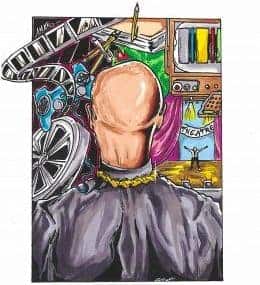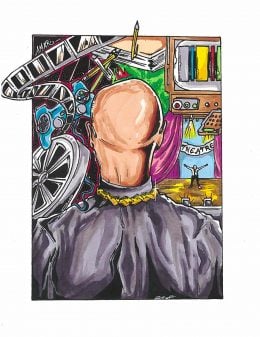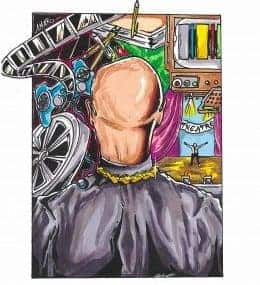He Named Me Malala – Overview/ Review (with Spoilers)
Overview He Named Me Malala strangely isn’t just about the young lady who turned an act of defiance into a movement. It is also about her family and, most of all, the man who named her, inspires her, and seems to be the one she draws her strength from. Characters & Story (with Commentary) Out…

Spoiler Alert: This summary and review contains spoilers.
Additionally, some images and text may include affiliate links, meaning we may earn a commission or receive products if you make a purchase.
Overview
He Named Me Malala strangely isn’t just about the young lady who turned an act of defiance into a movement. It is also about her family and, most of all, the man who named her, inspires her, and seems to be the one she draws her strength from.
Characters & Story (with Commentary)
Out of order, we are presented Malala’s story, as well as the story of her parents, who are a source of inspiration. She notes her mother leaving school early on, and her father’s fierce pursuit of educating, and education, as reasons she has taken the path she has gone on. But her story isn’t all about how her parents influenced her, it is also about her life, and theirs before the Taliban went from just a presence in her hometown of Swat to a violent force.
With her noting, alongside her father, the way things once were, we are presented an alternative to the usual narrative of what we are presented when it comes to countries with an Islamic majority. Through pictures, and animated scenes, the past is recreated and we are presented a culture flourishing before the Taliban invaded. All in an effort to show what once was, and could be again. Hence the reason to highlight, and uphold Malala, for, like the soldier in which her name came from, as many run for safety, she is facing a dangerous force of oppression, and raising a beacon of hope. One which, based off the many places they show her going, are in need of someone to not only speak for them, but present the opportunity, and focus, so that one day they can go beyond Malala’s, if not their own, wildest dreams.
Highlights
- The introduction dealing with how Malala’s father got inspired to name her that name, I felt was a fitting story. Mostly because, the way the documentary is done, it mirrors the story greatly with one exception: The Malala of the story dies, and this one lived.
- In general, I quite loved the animated parts of the movie and it helped craft in what likely there weren’t photographs or videos of.
- The relationship between Malala and her father is so cute and powerful, that honestly, it brought me to tears at times. I mean, it isn’t on some corny “Daddy’s little girl” type of trope. She is truly her father’s daughter and, whether solely by inspiration or through her upbringing, it seems she is continuing her father’s work. But her being an activist like her father isn’t what will make you teary eyed. If anything, it is watching her drawing strength from her father. For, as noted by the interviewer, she doesn’t speak much on any negative feelings, and yet you can see between talking about the past, and doing all these speeches, she is drained. Heck, even as studious as she is, even her grades show that she has a lot on her plate. Making for her leaning on her father perhaps being the rare moments when we see her actually vulnerable. Plus, post being shot, rather than questioning her own state, or anything of that nature, the documentary makes it seem her only worry was where her father was, and if he was alive?
- It was interesting for them to note that, at first, the Taliban’s presence was just that, a presence. They were local figures, of which one would have passionate sermons which didn’t seem to be of the Taliban we commonly know today. An odd thing to show for while it doesn’t humanize the Taliban, or make them seem less like villains, it does lead you to question if perhaps it is just the leadership that is wicked and those who follow just disenfranchised people trying to reclaim power lost over generations.
- Though not given a strong focus, it was nice that they showed how Malala’s work is influencing girls around the world, and showed how her organization, even if in a small way, is trying to help ease the lack of action many nations have when it comes to girls, and children in general, not being provided a proper education.
- As important as her work is, and how inspiring many find her story, it was good they didn’t just keep Malala on a pedestal but showed her as simply a teenager. One which likes school, but sometimes struggles, both with her studies and the social aspect; has crushes, but is afraid to talk to boys; and as much as she has gone through, is a bit worried about what people think of her.
- Though a very tiny, almost minuscule part, it was nice to show the handful of people who either don’t support Malala or else think there are things as an activist she should be doing differently. Which I highlight more so for it brings a slightly more rounded perception of her.
Low Points
- Honestly, perhaps the only negative I can come up with is that as much as you learn about Malala’s family, if you are like me, you might remember their story, but their names won’t stick at all.
Final Thought(s): Worth Seeing – Recommended
All things considered, I don’t know why I don’t watch more documentaries like this. They maintain the drama, like you’d see in movies like Concussion, but rather than the drama be made for Oscar bait, it is true to life issues that the person, who is worth discussing, actually faced. Also, in comparison to damn near all the likely soon to be Oscar nominated films I have seen this winter, this is perhaps the first one which genuinely got me emotional. Mind you, the film doesn’t even try, for everything isn’t at all presented for sympathy, just as fact of the matter. But what makes this film Worth Seeing to me is that it challenges you to think a bit. For while the topic of Malala’s campaign is young girl’s education in countries like Pakistan, and Nigeria, at the same time the film presents that these countries aren’t necessarily doing nothing, just not enough. Yet, as you think about all the people trying to take away the opportunities for young girls to become educated, it is hard to not also think about how countries like the United States also play a part. Not in terms of how our policies and rhetoric inspire people to join the Taliban, though that is part of the problem, but how in many ways we do the same to our girls. For while countries like the USA may not be bombing school, on their own turf, there are dress codes which damn girls for becoming women and present some of the low key ideas which, if you stretch the thought a bit, seem to mirror some of the Taliban’s belief systems. But this blog isn’t made for essays of that nature so I’ll leave that thought as incomplete.
Follow/Subscribe To Our External Pages
- Plot and Dialog - /100
- Character Development and Performances - /100
- Visuals and Sound - /100
- Pacing - /100
- Value For Intended Audience - /100


